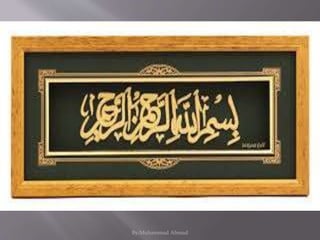8606 group dynamics
The document discusses group dynamics and defines a group as a collection of individuals who interact regularly, share common goals and feelings, and work together. It notes there are typically 3 to 20 members in a group according to Shaw. It also outlines several principles of group dynamics, including that groups require interaction between members and social attraction in order to develop relationships and be organized to achieve goals. Additionally, the document categorizes different types of groups, such as formal vs informal, primary vs secondary, and command vs task groups. It emphasizes the importance of interest within groups and resolving tensions to maintain equilibrium. Finally, it discusses the role of schools and teachers in modeling positive individual and group behaviors.

Recommended
Recommended
More Related Content
What's hot
What's hot (20)
Similar to 8606 group dynamics
Similar to 8606 group dynamics (20)
Recently uploaded
Recently uploaded (20)
8606 group dynamics
- 2. Group And Group Dynamics Principals and features of group dynamics Individual and group behavior Role of school and teacher in modeling individual and group behavior By:Muhammad Ahmad
- 3. Group is collection of individuals who have regular contact and frequent interaction, common goal and feelings----they work together. According to SHAW group have 3 to 20 member. By:Muhammad Ahmad
- 4. Group dynamics are CONCERNED b/w group member in social situation. In group dynamics we study ,how to develop the relationship between members. What types of forces are required to organized and promoted. By:Muhammad Ahmad
- 5. Group member should a) Interact with one another b) Be socially attracted to each other c) Share goals or objectives Criteria for Group Include a) Formal social structure b) Face to face interaction c) Two or more person having common goals By:Muhammad Ahmad
- 6. Psychological Aspects (Action , Thoughts Emotion can not understand with talking) Scientific Aspects ( provide scientific behavior towards study ) Sociological Aspect (traditions, values and norms) Practical Aspects (learning in class room) Personal Aspects (problem solving and sharing) By:Muhammad Ahmad
- 7. 1. Psychological VS Social Group (having similar nature,ideology,common tasks, and having family ,friend circle , political clubs or common education institution) 2.Formal VS informal group Formal groups are made under LEGAL authority in view of Specific results i.e. TEACHERs UNION GROUP Informal group is for PERSONAL INTERACTION i.e. PLAYERs GROUP By:Muhammad Ahmad
- 8. 3 . Primary VS Secondary Group Primary G,small size, face to face interaction i.e. family group Secondary G,Large size i.e association G 4.Membership VS Reference Group 5.Commond VS Task Group Command G, Boss on command employ report to boss directly i.e MEA In Task Group only co-worker involves but boss not involve 6.Interest VS Friendship By:Muhammad Ahmad
- 9. Interest with group No wall b/w leader and follower. More attraction within members Change for member time to time Arrange functions for motivation Inter group relationship should be strong Change behaviors By:Muhammad Ahmad
- 10. Individuals interaction ,respect each other Remove state of tension Return equilibrium after the resolution Change by introducing new members Faith and ideology should save. Restructure the group Solve problems by leader if any By:Muhammad Ahmad
- 11. Respect the ego Control impulsive behaviors Think positive Avoid critize Learn students to solve problem with happy face By:Muhammad Ahmad